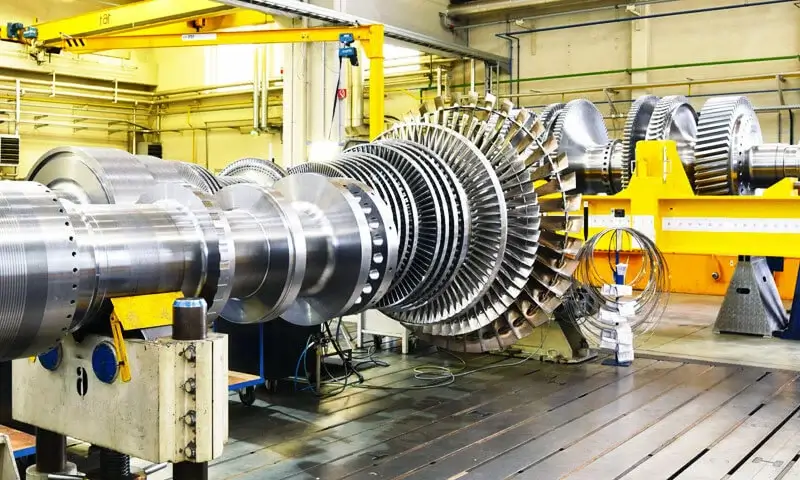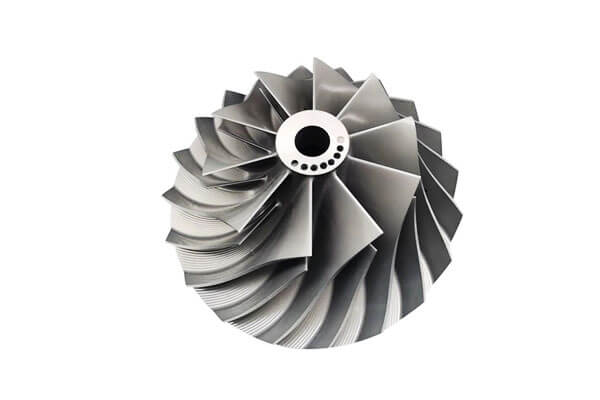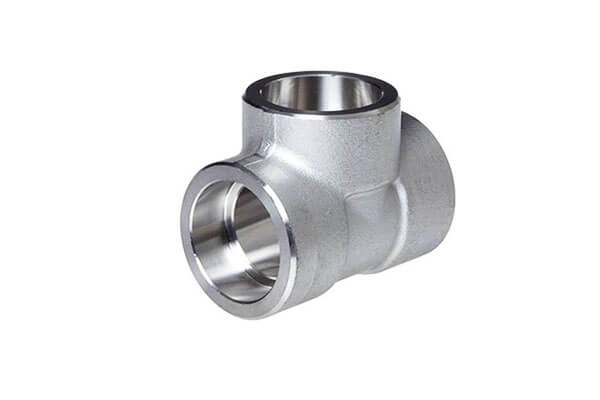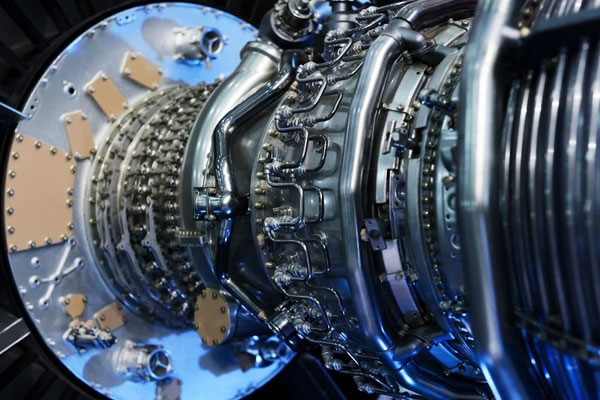1. ভূমিকা
Nickel-based high-temperature alloys stand at the forefront of modern engineering,
powering applications that demand extraordinary heat resistance, যান্ত্রিক শক্তি, and corrosion protection.
মহাকাশ, শক্তি উত্পাদন, রাসায়নিক প্রক্রিয়াজাতকরণ, and even cutting-edge automotive applications
require materials that withstand harsh thermal environments, intense mechanical loads, and corrosive elements.
Engineers consistently turn to nickel-based high-temperature alloys because they offer a unique combination of properties unmatched by conventional metals.
This article aims to provide a comprehensive analysis of nickel-based alloys.
We will define these materials, outline their critical properties, review their broad-ranging applications, and compare them with other materials.
আরও, we will address manufacturing challenges, innovative solutions, and future trends—painting a clear picture of why these alloys remain indispensable in high-performance environments.
2. Fundamentals of Nickel-Based High-Temperature Alloys
Understanding nickel-based high-temperature alloys begins with a clear definition of their composition and the properties that make them indispensable in extreme environments.
These alloys power some of the most demanding applications, so let’s break down what defines them and why they perform so exceptionally.
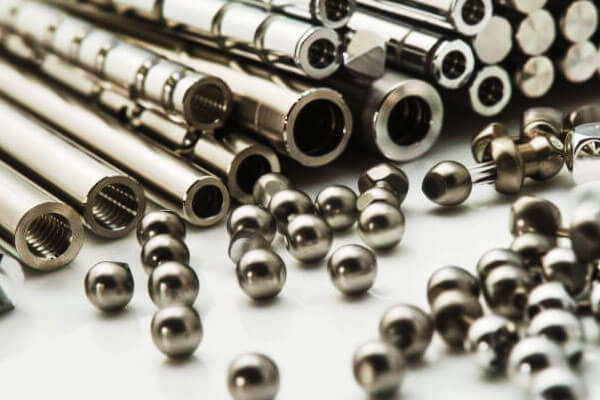
সংজ্ঞা & রচনা
Nickel-based high-temperature alloys consist predominantly of nickel—typically 50–70%—combined with critical alloying elements such as chromium, কোবাল্ট, এবং মলিবডেনাম.
This precise blend enables engineers to achieve a balance between performance and durability in harsh operating conditions.
সারমর্মে, these alloys deliver robust heat resistance and corrosion protection while maintaining mechanical strength.
Composition Insight:
- নিকেল (50–70%): Forms the backbone, providing high-temperature stability.
- ক্রোমিয়াম: Enhances oxidation resistance and strengthens the alloy structure.
- Cobalt and Molybdenum: Improve creep resistance and add durability under constant stress.
By carefully controlling the composition, manufacturers tailor these materials for applications ranging from turbine blades to jet engine components.
মূল বৈশিষ্ট্য
Nickel-based alloys are engineered to excel where conventional materials fall short. Their performance arises from a combination of exceptional properties:
- তাপ প্রতিরোধের:
These alloys operate reliably between 1,000°C and 1,200°C. উদাহরণস্বরূপ, ইনকেল 718 withstands extreme temperatures, making it vital in aerospace engine components. - ক্রিপ প্রতিরোধের:
They maintain their structural integrity over long periods, even when exposed to constant high stress.
This characteristic is crucial for applications like turbine blades that experience continuous thermal and mechanical loads. - জারা & জারণ প্রতিরোধের:
Nickel-based alloys thrive in aggressive environments.
Materials such as Hastelloy offer excellent resistance against acids, লবণ, and oxidative conditions, ensuring longevity in chemical processing and marine applications. - যান্ত্রিক শক্তি & নমনীয়তা:
These alloys balance the ability to withstand heavy loads with enough ductility to absorb mechanical shocks.
This balance prevents brittle failure and contributes to overall reliability during cyclic thermal operations.
Each property contributes to the alloy’s overall performance, making them uniquely suited for extreme environments.
শ্রেণীবিভাগ & প্রকারগুলি
Nickel-based high-temperature alloys come in various classifications based on their tailored properties and intended applications:
- সুপারালয় (যেমন, ইনকেল, রেনে):
Designed for aerospace and turbine engines, superalloys offer exceptional strength and stability under extreme thermal and mechanical stress.
They remain the top choice for high-performance applications that demand reliability. - Heat-Resistant Alloys (যেমন, Nimonic):
Optimized for gas turbines and industrial furnaces, these alloys focus on sustaining high temperatures over long periods without compromising performance.
They are crucial in energy production where consistent heat resistance is a must. - Corrosion-Resistant Alloys (যেমন, মনেল, তাড়াতাড়ি):
Employed in marine, রাসায়নিক, এবং তেল & gas environments, these alloys prioritize resistance to corrosive agents.
They ensure components maintain their integrity even when exposed to the harshest conditions.
3. Common Grades of Nickel-Based High-Temperature Alloys
Nickel-based high-temperature alloys come in a variety of grades, each tailored to specific applications requiring exceptional heat resistance, জারা সুরক্ষা, এবং যান্ত্রিক শক্তি.
নীচে কিছু বহুল ব্যবহৃত গ্রেড রয়েছে, categorized by their primary functions and industry applications.
Superalloys for Aerospace and Power Generation
These alloys are designed to withstand extreme temperatures and mechanical stress, making them ideal for jet engines, গ্যাস টারবাইন, and power plants.
Inconel Series (Nickel-Chromium-Based Alloys)
- ইনকেল 718
-
- মূল বৈশিষ্ট্য: Outstanding strength, high creep resistance, এবং দুর্দান্ত ld ালাইযোগ্যতা.
- Max Operating Temperature: ~700°C
- অ্যাপ্লিকেশন: Jet engine turbine blades, রকেট মোটর, and gas turbine discs.

ইনকেল 718 Turbine Wheel
- ইনকেল 625
-
- মূল বৈশিষ্ট্য: Excellent oxidation and corrosion resistance, বিশেষ করে সামুদ্রিক এবং রাসায়নিক পরিবেশে.
- Max Operating Temperature: ~1,000°C
- অ্যাপ্লিকেশন: Aerospace ducting, seawater components, এবং তাপ এক্সচেঞ্জার.
- ইনকেল 738
-
- মূল বৈশিষ্ট্য: Superior oxidation resistance and high-temperature strength.
- Max Operating Temperature: ~980°C
- অ্যাপ্লিকেশন: Turbine blades and combustors in power generation.
René Series (Advanced Nickel Superalloys)
- রেনে 41
-
- মূল বৈশিষ্ট্য: High-temperature strength and oxidation resistance with excellent creep performance.
- Max Operating Temperature: ~1,090°C
- অ্যাপ্লিকেশন: Jet engines, afterburner components, এবং নিষ্কাশন সিস্টেম.
- রেনে 80 & রেনে 95
-
- মূল বৈশিষ্ট্য: Used in high-performance turbine blades due to their excellent strength and creep resistance.
- Max Operating Temperature: ~1,200°C
- অ্যাপ্লিকেশন: Gas turbine components and industrial power generation.
Nimonic Series (Nickel-Chromium-Cobalt-Based Alloys)
- Nimonic 75
-
- মূল বৈশিষ্ট্য: Good oxidation and corrosion resistance with moderate strength.
- Max Operating Temperature: ~980°C
- অ্যাপ্লিকেশন: Jet engines, গ্যাস টারবাইন, and heat treatment fixtures.
- Nimonic 90
-
- মূল বৈশিষ্ট্য: Enhanced strength and creep resistance at elevated temperatures.
- Max Operating Temperature: ~1,050°C
- অ্যাপ্লিকেশন: High-temperature springs, মহাকাশ ফাস্টেনার, and combustion chamber components.
Corrosion-Resistant Nickel Alloys for Chemical and সামুদ্রিক অ্যাপ্লিকেশন
These alloys provide superior corrosion resistance, making them ideal for harsh environments such as chemical processing plants, অফশোর তেল রিগস, and seawater systems.
Hastelloy Series (Nickel-Molybdenum-Chromium-Based Alloys)
- Hastelloy C-22
-
- মূল বৈশিষ্ট্য: Exceptional resistance to oxidizing and reducing agents, এটা অত্যন্ত বহুমুখী তৈরীর.
- Max Operating Temperature: ~1,100°C
- অ্যাপ্লিকেশন: তাপ এক্সচেঞ্জার, flue gas scrubbers, and pharmaceutical processing.

Hastelloy c22 forged tee
- Hastelloy C-276
-
- মূল বৈশিষ্ট্য: Excellent pitting, স্ট্রেস জারা, and acid resistance.
- Max Operating Temperature: ~1,100°C
- অ্যাপ্লিকেশন: রাসায়নিক চুল্লি, সামুদ্রিক উপাদান, and pollution control equipment.
Monel Series (Nickel-Copper-Based Alloys)
- মনেল 400
-
- মূল বৈশিষ্ট্য: Outstanding seawater corrosion resistance and good mechanical properties.
- Max Operating Temperature: ~600°C
- অ্যাপ্লিকেশন: Marine applications, রাসায়নিক প্রক্রিয়াজাতকরণ, and hydrocarbon refining.
- মোনেল কে-৫০০
-
- মূল বৈশিষ্ট্য: Improved strength and hardness over Monel 400 due to titanium and aluminum additions.
- Max Operating Temperature: ~650°C
- অ্যাপ্লিকেশন: Oil drilling tools, submarine components, and fasteners in corrosive environments.
High-Strength Alloys for স্বয়ংচালিত, চিকিত্সা, and Emerging Industries
These alloys provide durability and reliability for specialized applications in transportation, স্বাস্থ্যসেবা, and cutting-edge technology.
Haynes Series (High-Performance Nickel-Based Alloys)
- হেইন্স 188
-
- মূল বৈশিষ্ট্য: Excellent thermal stability and oxidation resistance at extreme temperatures.
- Max Operating Temperature: ~1,100°C
- অ্যাপ্লিকেশন: Combustion liners, তাপ ঢাল, and hypersonic aircraft components.
- হেইন্স 230
-
- মূল বৈশিষ্ট্য: Outstanding high-temperature strength and oxidation resistance.
- Max Operating Temperature: ~1,150°C
- অ্যাপ্লিকেশন: চুল্লি উপাদান, তাপ এক্সচেঞ্জার, and aerospace structural elements.
MP35N (Nickel-Cobalt-Chromium-Molybdenum Alloy)
- মূল বৈশিষ্ট্য: ব্যতিক্রমী শক্তি, জারা প্রতিরোধের, এবং জৈব সামঞ্জস্যতা.
- Max Operating Temperature: ~650°C
- অ্যাপ্লিকেশন: Pacemakers, অর্থোপেডিক ইমপ্লান্ট, এবং চিকিত্সা devices.
4. Mechanical Properties of Nickel-Based High-Temperature Alloys
Nickel-based high-temperature alloys exhibit a unique blend of mechanical properties that set them apart in extreme environments.
Exceptional Strength and Creep Resistance
One of the standout features of these alloys is their high tensile and yield strength.
উদাহরণস্বরূপ, alloys like Inconel 718 typically achieve tensile strengths in the range of 1,200 MPa at room temperature and maintain remarkable strength even at elevated temperatures.
This robust strength ensures that components can handle heavy loads without deforming.
Equally important is their excellent creep resistance.
In service environments where components experience prolonged stress at high temperatures, nickel-based alloys maintain dimensional stability over time.
Engineers rely on this property to design turbine blades and other critical components that must perform continuously under extreme conditions.
Superior Fatigue Resistance and Toughness
এগিয়ে যাচ্ছে, nickel-based alloys also excel in fatigue resistance.
They endure cyclic loading without succumbing to premature failure, a quality essential for applications like jet engines and industrial gas turbines.
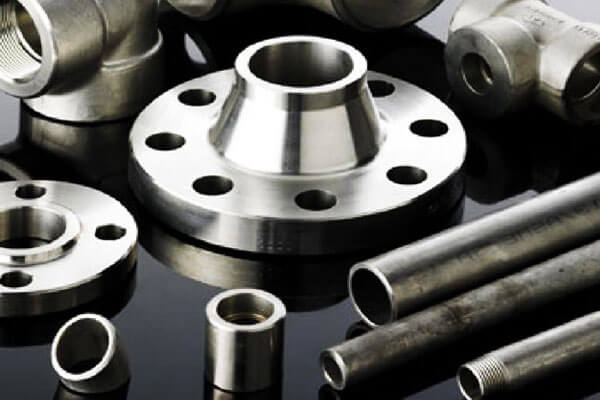
আরও, these materials offer outstanding toughness, meaning they can absorb shocks and impacts without fracturing.
This combination of high fatigue resistance and toughness ensures long-term reliability in components exposed to repeated stress cycles.
High Ductility and Workability
In addition to their strength and durability, these alloys demonstrate notable ductility.
Unlike brittle materials that crack under sudden stress, nickel-based alloys exhibit significant plastic deformation before failure.
This characteristic allows engineers to work with them in complex forming and machining processes, enabling the production of intricate components with precise geometries.
Microstructural Stability and Damage Tolerance
আরও, the microstructural stability of nickel-based high-temperature alloys contributes to their overall performance.
They resist microstructural degradation even under harsh thermal and mechanical conditions.
ফলস্বরূপ, these alloys offer consistent performance and maintain their mechanical integrity over prolonged periods.
This damage tolerance is particularly critical for high-performance applications, where even minor defects can lead to catastrophic failures.
5. তুলনামূলক বিশ্লেষণ: নিকেল অ্যালয়েস বনাম. বিকল্প উপকরণ
When comparing nickel alloys to alternatives, যেমন টাইটানিয়াম অ্যালো এবং সিরামিক, several factors emerge:
উপাদান বৈশিষ্ট্য তুলনা
- তাপমাত্রা প্রতিরোধের:
Nickel alloys endure up to 1,200°C, far surpassing the 600°C limit of titanium alloys.
Although ceramics can withstand temperatures around 1,500°C, their brittleness limits practical applications. - জারা & জারণ:
Engineers consistently observe that nickel alloys offer superior performance in harsh, oxidizing environments compared to titanium and ceramics. - Mechanical Workability & নমনীয়তা:
Nickel alloys provide an optimal balance of toughness and ductility.
বিপরীতে, ceramics often shatter under thermal shock, while titanium alloys, although robust, do not match nickel’s comprehensive performance.
টাইটানিয়াম
Cost and Economic Considerations
- উপাদান খরচ:
While nickel alloys typically carry higher upfront costs, their extended service life and lower maintenance requirements yield significant long-term savings. - Manufacturing Complexity:
Processing nickel alloys demands sophisticated techniques that drive production costs higher; তবে, these methods produce components with unmatched durability and performance. - জীবনচক্র & রিসাইক্লিং:
Nickel alloys offer notable sustainability benefits through recyclability and prolonged operational life, making them economically attractive over time.
| সম্পত্তি | নিকেল অ্যালয় | টাইটানিয়াম অ্যালয় | সিরামিকস |
|---|---|---|---|
| সর্বোচ্চ তাপমাত্রা | 1,200° সে | 600° সে | 1,500° সে |
| জারা প্রতিরোধের | দুর্দান্ত | ভাল | দরিদ্র |
| মেশিনিবিলিটি | চ্যালেঞ্জিং | মাঝারি | Brittle |
| ব্যয় | $ | $$ | $$ |
6. Manufacturing Challenges and Solutions
Manufacturing nickel-based high-temperature alloys presents several challenges that directly impact production efficiency, ব্যয়, এবং উপাদান কর্মক্ষমতা.
তবে, engineers and manufacturers continue to innovate, developing techniques that address these obstacles while enhancing overall quality.
এই বিভাগে, we discuss key processing challenges and explore cutting-edge solutions that drive improvements across the industry.
প্রক্রিয়াকরণে চ্যালেঞ্জ
Nickel-based alloys offer exceptional performance, but their advanced properties also create manufacturing hurdles. The following challenges are particularly significant:
- উচ্চ উপাদান খরচ:
The premium composition of these alloys results in elevated raw material expenses, which can significantly impact production budgets. - Machinability and Tool Wear:
The inherent hardness of nickel-based alloys accelerates tool wear during machining.
This challenge requires sophisticated processing methods to maintain precision while minimizing downtime. - Recycling Complexity:
Recovering high-purity nickel from used components remains difficult.
The presence of oxide layers and complex alloy compositions complicates recycling, which in turn affects sustainability and overall cost efficiency. - হাইড্রোজেন এমব্রিটলমেন্ট:
Exposure to hydrogen can compromise the structural integrity of the alloys. This degradation mechanism necessitates strict process controls to ensure long-term reliability.
Each of these challenges demands targeted solutions that not only mitigate production risks but also enhance the performance and sustainability of the final product.
Innovative Solutions and Technologies
In response to these challenges, manufacturers have adopted several innovative strategies designed to improve both the efficiency and quality of nickel alloy processing.
- অ্যাডিটিভ ম্যানুফ্যাকচারিং (3ডি মুদ্রণ):
Engineers leverage 3D printing to minimize material waste and reduce production costs.
উদাহরণস্বরূপ, GE’s 3D-printed Inconel components have demonstrated up to a 40% reduction in material usage.
This approach enables the creation of complex geometries that would otherwise require multiple machining steps. - ক্রায়োজেনিক মেশিনিং:
By incorporating liquid nitrogen cooling, cryogenic machining significantly reduces tool wear and enhances surface finish.
This technique helps maintain tight tolerances while lowering overall processing costs. - Laser Cleaning for Recycling:
Advanced laser cleaning technology efficiently removes oxide layers from scrap metal, thereby improving the recovery rate of high-purity nickel.
This process not only supports recycling initiatives but also reduces the environmental impact of production. - Development of Cobalt-Free Alternatives:
Researchers and manufacturers are exploring cobalt-free formulations, such as Ni-Fe-Mo alloys,
which maintain performance while reducing reliance on expensive and ethically challenging materials. These alternatives help stabilize supply chains and lower production costs.
Through these innovative solutions, manufacturers overcome the inherent challenges associated with nickel-based high-temperature alloys.
ফলস্বরূপ, they achieve enhanced productivity, improved material performance, and greater sustainability across the production process.
7. ভবিষ্যতের প্রবণতা এবং উদ্ভাবন
The field of nickel-based high-temperature alloys evolves rapidly. Emerging technologies promise to enhance performance, টেকসই, and application breadth.
AI-Driven Materials Design and Simulation
- Machine Learning in Alloy Development:
Companies such as Citrine Informatics leverage machine learning to predict alloy properties, reducing R&D cycles by up to 50%.
Engineers now optimize alloy compositions before production, minimizing trial-and-error. - ডিজিটাল টুইন প্রযুক্তি:
Creating digital replicas of manufacturing processes allows engineers to simulate operational environments and optimize alloy performance virtually, ensuring better real-world outcomes.
Green Manufacturing & স্থায়িত্ব
- Recycling Initiatives:
Projects recovering high-purity nickel from industrial waste have gained momentum. These initiatives not only reduce environmental impact but also lower production costs. - Bioleaching Techniques:
Environmentally friendly methods that employ fungi such as Aspergillus niger reduce CO₂ emissions by up to 60% compared to traditional extraction methods,
marking a significant stride toward greener manufacturing.
Space-Age Applications
- Asteroid Mining:
Startups like AstroForge explore the feasibility of harvesting nickel-rich asteroids.
This breakthrough could transform in-space manufacturing and reduce dependence on Earth-sourced materials.

- Lunar & Martian Manufacturing:
In the context of off-world exploration, nickel alloys are critical for constructing radiation shields and habitats on the Moon and Mars, ensuring human safety and infrastructure durability.
8. উপসংহার
Nickel-based high-temperature alloys consistently prove their worth in the most demanding applications.
They power jet engines, secure nuclear reactors, enhance gas turbine efficiency, and even enable breakthroughs in space exploration.
Their unique combination of heat resistance, হামাগুড়ি প্রতিরোধ, জারা সুরক্ষা, and mechanical strength makes them indispensable across multiple industries.
উন্মুখ, innovations driven by AI, sustainable manufacturing practices, and emerging space applications will further cement the role of nickel alloys in high-performance engineering.
Engineers and manufacturers now have a clear pathway to leverage these advanced materials for next-generation technologies,
ensuring that our journey into extreme environments remains safe, দক্ষ, and innovative.
Embrace the future of materials science and explore how nickel-based high-temperature alloys can transform your next project.
The next breakthrough in performance, টেকসই, and reliability is here—and it starts with nickel.

